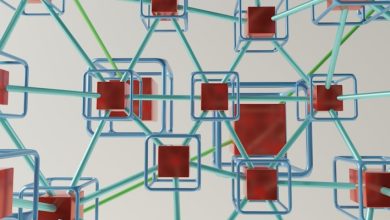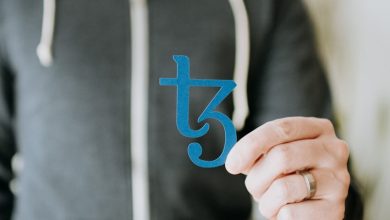How Blockchain is Powering the Internet of Things (IoT)

- Understanding the basics of blockchain technology
- The role of blockchain in securing IoT devices
- Exploring the benefits of blockchain in IoT applications
- Challenges of integrating blockchain with IoT
- Real-world examples of blockchain-powered IoT solutions
- Future outlook: How blockchain is shaping the IoT landscape
Understanding the basics of blockchain technology
Blockchain technology is a decentralized, distributed ledger that records transactions across a network of computers. Each transaction is verified by network participants, known as nodes, before being added to the blockchain. This creates a secure and transparent record of transactions that cannot be altered or deleted.
The blockchain is made up of blocks of data that are linked together in a chain. Each block contains a list of transactions, a timestamp, and a unique identifier called a hash. When a new transaction is added to the blockchain, it is verified by the nodes and then added to a new block. This block is then linked to the previous block, creating an unbreakable chain of transactions.
One of the key features of blockchain technology is its immutability. Once a transaction is added to the blockchain, it cannot be changed or deleted. This makes blockchain ideal for recording transactions in a secure and transparent manner.
Another important aspect of blockchain technology is its transparency. Because the blockchain is public and decentralized, anyone can view the transactions that have been recorded on the blockchain. This transparency helps to build trust among users and ensures the integrity of the data recorded on the blockchain.
Overall, blockchain technology provides a secure, transparent, and immutable record of transactions. By leveraging this technology, the Internet of Things (IoT) can benefit from increased security, efficiency, and trust in the data being transmitted between devices.
The role of blockchain in securing IoT devices
Blockchain technology plays a crucial role in securing Internet of Things (IoT) devices by providing a decentralized and tamper-proof system. One of the main challenges with IoT devices is the vulnerability to cyber attacks due to centralized control systems. Blockchain offers a solution by distributing the control and data across a network of nodes, making it extremely difficult for hackers to compromise the system.
By using cryptographic algorithms and consensus mechanisms, blockchain ensures the integrity and security of data transmitted between IoT devices. Each transaction is recorded on a shared ledger that is immutable, transparent, and verifiable. This not only enhances the trustworthiness of the data but also prevents unauthorized access and tampering.
Furthermore, blockchain enables secure device identification and authentication, which is essential for establishing trust between devices in an IoT network. With blockchain, each device is assigned a unique digital identity that is stored on the blockchain, eliminating the risk of spoofing or impersonation.
In addition, blockchain technology can facilitate secure and automated transactions between IoT devices, enabling a seamless exchange of data and services. Smart contracts, which are self-executing contracts with the terms of the agreement directly written into code, can be used to automate processes such as device provisioning, data sharing, and payment settlements.
Exploring the benefits of blockchain in IoT applications
One of the key benefits of incorporating blockchain technology into IoT applications is the enhanced security it provides. By utilizing a decentralized and tamper-proof ledger, blockchain can help prevent unauthorized access, tampering, and data breaches in IoT devices and networks. This heightened security is crucial in ensuring the integrity and confidentiality of sensitive data transmitted and stored by IoT devices.
Another advantage of blockchain in IoT applications is the improved transparency and traceability it offers. With blockchain, every transaction and data exchange can be recorded in a transparent and immutable manner, allowing for a clear audit trail of activities. This can be particularly beneficial in supply chain management, where tracking the movement of goods and verifying authenticity is essential.
Furthermore, blockchain technology can facilitate automated processes and smart contracts in IoT applications. Smart contracts are self-executing contracts with the terms of the agreement directly written into code. By leveraging blockchain, IoT devices can autonomously engage in transactions and execute predefined conditions without the need for intermediaries, streamlining operations and reducing costs.
Challenges of integrating blockchain with IoT
One of the challenges in integrating blockchain with IoT is the issue of scalability. As the number of connected devices continues to grow exponentially, blockchain networks may struggle to handle the increasing volume of transactions. This can lead to delays in processing data and ultimately hinder the real-time capabilities of IoT systems. Additionally, the complexity of blockchain algorithms can require significant computational power, which may not be feasible for resource-constrained IoT devices.
Another challenge is the issue of security. While blockchain technology is lauded for its security features, it is not immune to vulnerabilities. Malicious actors could potentially exploit weaknesses in the blockchain network to gain unauthorized access to IoT devices or manipulate data. Ensuring the integrity and confidentiality of IoT data remains a critical concern when integrating blockchain technology.
Interoperability is also a major challenge when it comes to integrating blockchain with IoT. Different IoT devices and platforms may use varying protocols and standards, making it difficult to establish seamless communication and data exchange. Without standardized protocols for blockchain integration, interoperability issues could arise, hindering the efficiency and effectiveness of IoT systems.
Moreover, the cost of implementing blockchain technology in IoT systems can be prohibitive for many organizations. The infrastructure required to support blockchain networks, as well as the ongoing maintenance and operational costs, can be significant. This cost factor may limit the adoption of blockchain technology in IoT applications, especially for small and medium-sized enterprises with budget constraints.
In conclusion, while the integration of blockchain with IoT presents numerous benefits, such as enhanced security and transparency, there are several challenges that need to be addressed. Scalability, security, interoperability, and cost are key considerations that must be carefully navigated to fully realize the potential of blockchain-powered IoT systems. By overcoming these challenges, organizations can leverage the combined power of blockchain and IoT to drive innovation and efficiency in the digital landscape.
Real-world examples of blockchain-powered IoT solutions
Real-world examples of blockchain-powered IoT solutions are becoming increasingly prevalent as companies seek to improve security, transparency, and efficiency in their operations.
- One example is VeChain, a blockchain platform that integrates with IoT devices to track products throughout the supply chain. This technology helps verify the authenticity of products and ensures they have not been tampered with.
- Another example is IOTA, a cryptocurrency that is specifically designed for IoT devices. IOTA’s Tangle technology allows connected devices to securely exchange data and payments without transaction fees.
- Waltonchain is a blockchain project that focuses on integrating RFID technology with IoT devices to improve supply chain management. By using blockchain, Waltonchain ensures that data is secure and immutable.
These examples demonstrate the potential for blockchain and IoT to work together to create innovative solutions that address the challenges facing industries such as logistics, manufacturing, and healthcare. As more companies adopt these technologies, we can expect to see even more groundbreaking applications in the future.
Future outlook: How blockchain is shaping the IoT landscape
Looking ahead, the future of the Internet of Things (IoT) landscape appears to be tightly intertwined with blockchain technology. The marriage of these two innovative technologies is set to revolutionize the way devices communicate and interact with each other in the digital realm.
Blockchain’s decentralized and secure nature addresses many of the challenges facing the IoT ecosystem, such as data privacy, security, and interoperability. By leveraging blockchain’s distributed ledger technology, IoT devices can securely exchange data and execute transactions without the need for a central authority.
Moreover, blockchain’s tamper-proof record-keeping capabilities enhance the trustworthiness of IoT data, ensuring its integrity and authenticity. This is especially crucial for critical applications like smart cities, healthcare, and supply chain management, where data accuracy is paramount.
As blockchain continues to evolve and mature, we can expect to see more seamless integration with IoT devices, enabling new use cases and business models to emerge. From autonomous vehicles to industrial automation, the possibilities are endless when these two technologies join forces.
In conclusion, the future outlook for blockchain in shaping the IoT landscape is promising. With its ability to address key challenges and unlock new opportunities, blockchain is poised to become the backbone of the next generation of IoT applications. As businesses and industries embrace this transformative duo, we can anticipate a future where connected devices operate more securely, efficiently, and intelligently than ever before.



